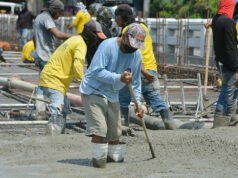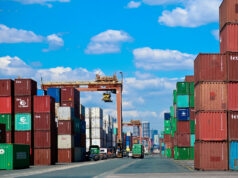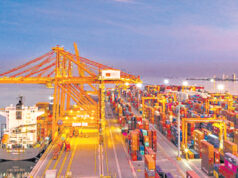nCov expected to dent consumption in 2020
A PROLONGED novel coronavirus (nCoV) outbreak will hurt public consumption but a rebound in capital formation is expected to drive growth this year, an ING Bank economist said.
During the ING Bank’s Annual Research Roadshow forum on Tuesday, Nicholas Antonio T. Mapa, senior economist at ING Bank Philippines, said the economy could see a rebound in capital formation or investment this year on the back of monetary easing and the timely passage of 2020 budget.
Public consumption, which is equivalent to 70% of gross domestic product, is expected to take the biggest hit from the nCoV outbreak.
The Monetary Board cut benchmark interest rates by 25 bps during its first rate-setting meeting of the year last week while Bangko Sentral ng Pilipinas (BSP) Governor Benjamin E. Diokno signaled that another rate cut is possible by midyear.
According to Mr. Mapa, the outbreak could shave 0.2 percentage points off 2020 gross domestic product (GDP) growth, taking his projections down to 6.4% from 6.6% previously, which is already below the 6.5-7.5% growth target range set by the government’s economic managers.
“I think consumption will be the biggest hit; I think the growth will come from capital formation. Last year it was a drag actually, but this year, if it comes back and will be great, BSP possibly cutting another 25 (basis points) in May or June, this should help revitalize your capital formation,” he told reporters.
According to the Philippine Statistics Authority, capital formation rose 0.4% in the fourth quarter of 2019 to P749.05 billion, little changed from P746.21 billion a year earlier. Investment in construction grew 11.8% year-on-year while investment in durable equipment continued to decline, falling 5.9% during the period.
Mr. Mapa said despite the budget being passed more promptly this year, imports of raw materials for infrastructure projects could face delays if the outbreak continues to disrupt supply chains over the longer term since China is a major source of raw materials.
“Maybe some delay, so you might have to pare that down a bit but as of now I don’t really see that being a big problem so far but eventually, if it drags out then maybe that chokes off our source of raw material imports,” he said when asked about risks to the infrastructure supply chain.
However, he said the country could source its needed raw materials from other countries, and “If the government gets their infrastructure program going well, capital formation will hold despite nCoV.
Meanwhile, ING Bank Chief Economist and Head of Research in Asia-Pacific Rob Carnell stressed the importance of infrastructure development as it attracts investment while raising productivity.
“It really is a tremendously productive thing to spend money on these days, if government is worried about GDP growth and employment not being good enough and they’ve got money to spend, then this is what delivers you your rate of return, this is what gives you your social return and your actual economic return on that investment because it pays off. In this case, the infrastructure will deliver, you build it and they will come and it will help,” Mr. Carnell told reporters.
The current administration is currently taking on its massive infrastructure development program, known as “Build, Build, Build” to close the Philippines’ infrastructure backlog.
Mr. Mapa said compared to its regional peers, the Philippines continues to lag in terms of quality infrastructure and is still catching up.
According to preliminary estimates by the National Economic and Development Authority, a prolonged nCoV outbreak will largely hurt the tourism sector and might dent the economy by around 0.3 percentage points if the virus lingers until June. The drag on GDP is expected to rise to 0.7 percentage points if the threat remains elevated until December.
“Both fiscal and monetary policy, they will be providing quite a lot of stimulus, so it should cushion (the impact of the virus outbreak,” Mr. Mapa said. — Beatrice M. Laforga



